








AN INSIDE LOO TRANSFORMA
LEGENDARY
CH IN CONVERSATI QUEEN OF MEM THE SHAN COMMUNIT A GUIDE TO O CORNER OF TH YEAR E STAFF P THE BEST (AND WORST) OF AN UNFORGETTABLE YEAR








Few aspects of the music industry are as confounding and misunderstood as music publishing, which is where Crosstown Arts’ Music Publishing Coordinator Charles Seaton comes in. Seaton’s primary goal is to ensure that Memphis-based musicians receive all available royalties for their original music, which is a critical component of any healthy music scene. We recently sat down with Seaton to learn more about his work.
Let’s start with the basics. Tell us a bit about your background and your role within Crosstown Arts.

I’m Charles Seaton and I graduated from the University of Memphis Music Industry Program in the Spring of 2021. Long story short, through opportunities I got at the U of M, I was recommended for a job here at Crosstown starting a new team called the Musician and Artists Services team. My job is to help artists understand what music publishing and ownership is, and to give them the tools and resources to maintain their catalog on their own. We serve artists who were born here or make music in Memphis. I serve those artists by sharing information concerning where does your money in the music industry come from, what accounts do you need, where do you need to register your catalog of music, what paperwork do you need, and how do you take advantage of your catalog once it is mixed and mastered and it’s ready to have a home somewhere. Through licensing at Crosstown Sync, we ’ re able to help artists figure out what path their music might have in front of them.
Do you charge any money for any of these programs?
No. For Publishing Admin Support and Crosstown Sync, there is no fee to be a part of those initiatives. When we were developing these programs - Healthcare Support, Publishing Support, and Crosstown Sync- we said people shouldn’t have to pay to get access to resources or opportunities. All that we offer is free; for Crosstown Sync, there is a commission for business that we bring to the table. We wanted to provide a platform for artists to get opportunities, and on top of that, resources and an expanded network for them to tap into.

As far as you’re aware, is there a precedent for this type of service?
Somebody was telling me about a similar initiative going on overseas, but I don’t believe that this is very popular across the world, especially in terms of what we offer and the way we offer it. A lot of folks have a publishing course where you pay $20 for an eBook on their website or something similar, but I’m not aware of anything quite like what we do.
One of the things that seems to differentiate your program from other music publishing courses is the individualized attention that artists receive. Yea. It’s definitely been a learning curve, because every meeting is different. There have been artists that we met with in 2020 before any of this went public that we were able to get sync placements for last year and this year. Being able to hand them a check for X amount of dollars is crazy to me. It lets me know that the work we ’ re doing is meaningful and has purpose, and that these artists who are serious about their careers can have success. One sync in 3 years might not look like something to a lot of people, but some people go their entire career without a sync, even bigger artists. For independent artists to be able to do this on their own is so cool to me. Even with the pandemic and strikes slowing down productions, we ’ ve still been getting a lot of successes for our artists.
Explain what exactly a sync is.
Sync is the art of licensing music to an audiovisual product. That can be an ad campaign for Ford or Apple, or a video game like FIFA or 2K, or it can be film or TV. The process of clearing the rights between the songwriters and the master owners to feature a song in a given audiovisual production, that’s sync.
Tell us about some of the artists you’ve worked with.
One of the first artists we worked with was Talibah Safiya. At the time, I didn’t know what this job would look like for me. I told her “ you should have an account with this place and this place”, and she was like “Where? Who?” And at the time, I didn’t really know how to explain it, I was just telling her what I know. Over the years, we ’ ve been able to reconnect, helping her get her paperwork in order for syncs that she’s been doing, and making sure all of the royalties from previously released music were making their way to her. Because a lot of artists don’t necessarily know how to collect royalties in general; they think they can simply create the accounts and the rest will be done for them, when in many cases that’s not the case. So working with Talibah over the years has been really cool.
Jackson Ave were one of the first groups of people to believe in us as Crosstown Sync to represent them for sync. Although we hadn’t gotten a sync deal for the
song they gave us initially, we ’ ve been able to get them syncs by passing them along to the music supervisor network that we have. Just making sure the people we do business with know about some of our favorite artists and the rest of the catalog.
Idi x Teco were also some of the first people to take a chance on us. All of the artists I’ve mentioned have been a part of our writing camps over the years. It’s been really cool to see them in different capacities and see how they approach the industry.
It seems like this is still a relatively new program that is still evolving in certain ways. What are some of the things that have changed since your initial launch?
Yes. I was part-time when I started. The plan was to hit the ground running, but the pandemic basically forced us to take a step back. It was a blessing, because we really got to figure out what exactly we wanted to do. We spent the entire pandemic laying the groundwork for what these programs would be. There was a lot of trial and error. We figured out quickly that I could not do everything for the artists, and that it was easier for me when artists know what’s going on. So I help artists with things like keywords in contracts and paperwork. I also tell them how their catalogs are generating money, whether it’s royalties or syncs or both. Royalties can sustain you for a lifetime, so I want artists to understand how important it is to have it right now.
You were instrumental in helping to bring the Mechanical Licensing Collective to Memphis. Tell us a bit about that.
There was this bill passed called the Music Modernization Act, and the MLC was formed as a result of that. Basically, the government said that the music industry needs to catch up with the rest of the world, and there needs to be digital ways to register music, but also for digital streaming services like Spotify and Apple Music, songwriters need to get paid their respective mechanical royalties for these streams or digital purchases or downloads. We hosted them at the end of 2023.
Let’s pretend I’m an artist and I want to get into contact with you. What does that process look like?
There’s a number of ways. My favorite is showing people my link card if we meet in person; you hold it up to your phone and it takes you to a web page with all my contact info. Number two is going to crosstownarts.com, going to the Musician and Artists Services menu tab, and there’s a link under “Get free music publishing support” where you can contact me. Number 3 seems to be the most popular way:

My passion is two fold in that, growing up I was interested in the music industry, but there were a lot of barriers. So I knew if I ever got a chance to be in the industry, I would remove barriers. I want the next generations to have what we didn’t have--the next generation of music industry professionals should have an understanding of the industry. My passion is very much for myself but also for the future of the industry. For additional information or to book a meeting, visit https://crosstownarts.org/music/. A video of our full conversation is available here



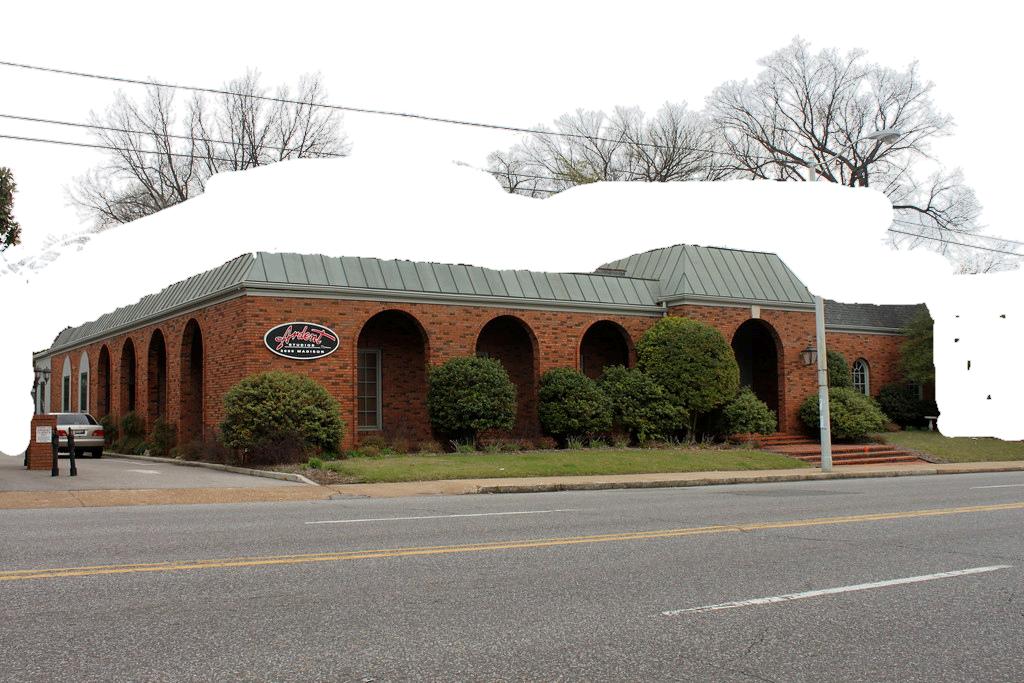
In the early days of 2023, the Memphis music community was abuzz (and in some cases, downright incensed) when it came to light that Ardent Studios planned to sell off a wide selection of recording equipment, much of which had been in place for the majority of its 60+ year existence. Was the legendary studio closing? Was a new regime now in charge? Had they lost their damn minds?
Recognizing the need for a formal response to these inquiries, studio manager and legendary Big Star drummer Jody Stephens released a statement to the Commercial Appeal, saying ““We are in the midst of a renovation of the studio, but it’s about as positive a turn of events as there could be. There was maintenance and upgrades needed on the rooms and equipment, but also we saw an opportunity to reposition the studio for the future.”
For the uninitiated, Ardent has more than earned their spot on the Mount Rushmore of Memphis studios alongside Sun, Stax, and Royal. Internationally renowned for decades, Ardent has helped create enduring masterpieces from artists ranging from homegrown heroes such as Isaac Hayes and Big Star to musical giants including Led Zeppelin and Stevie Wonder. We’ve been fans since the shop opened down the street from Ardent, and the studio’s indispensable history in fostering the city’s garage bands of the ‘60s and ‘70s was later enshrined in the Shangri-La Projects fan fave Playing for a Piece of the Door book. In short, Ardent is synonymous with creative energy and technological excellence. (For a deeper dive into the studio’s history, check out their official story here.)

Unsurprisingly, questions still persisted, a reflection of just how much Ardent and its impressive legacy still means to the people of Memphis. As longtime neighbors, we here at Shangri-La were in a prime position to begin filling in the blanks, especially as it pertained to the studio’s new President and the man ultimately responsible for the ongoing upgrades.
During his frequent visits to the shop, we were able to get a better sense of the mysterious transplant named Mark Danger who had suddenly (and quietly) taken the reins of a beloved institution. In short, Mark is a fascinating study in contrasts: reserved in manner, yet flamboyant in his dress; generous with his time and willingness to answer questions, yet protective of certain personal details. We quickly got the sense that Mark was the type who prefers to work in quasi-anonymity and let his work speak for itself, at least for the time being.

So who exactly is this Mark Danger character, and what has he been working on for the past couple of years? To find out, we were invited to visit him at the new-andimproved Ardent, which recently resumed recording sessions after a lengthy hiatus. We sat with Mark and Jody Stephens in Studio A’s live room for a freewheeling conversation, beginning with Mark’s background.
“I grew up in a family that owned recording studios in Cleveland, so I’ve always been exposed to this world,” he says. “As a kid, my babysitters were really the instruments and studio equipment that was around. But you know, I don’t think my parents actually wanted me to do this.
They did everything they could to get me not to be involved with studios, because it can be such a nightmare. That said, I did eventually decide that I wanted to pursue a career in the studio, so I would often break into the studio or stay after a session and start throwing up master tapes.”

After being gifted an 8-track recorder from his father as a young teen, Mark began to record his friends’ bands, oftentimes setting up makeshift recording studios right in their living rooms. By the time he was in high school, Mark was working professionally within his family’s studio, picking up a myriad of different skills. Eventually, he began producing for local bands. “Back then, when I would look at my records, I didn’t really look at the names of the players. I always went straight to the producer, because I wanted to understand how in the hell they made these songs. I remember my old man telling me ‘when you listen to a Led Zeppelin record, just remember that it was produced by Jimmy Page, so if you want to play in a band, do that shit.”
As he became increasingly proficient within the studio, Mark also began expanding his musical horizons and taking mental notes from established producers such as Roy Thomas Baker, who he says inspired him to “break the needles on the tape machine, because that’s what he did, and that’s how you get that sound.” He also credits jazz musicians such as the Mahavishnu Orchestra and Chick Corea with aiding in his understanding of “deep, weird chord structures.”
By the time he was out of high school, Mark says that he was already feeling like a big fish in a small pond and made the decision to pursue his production career in New York City. In an all-too-familiar tale, the young and ambitious talent was
quickly humbled by the realities of life in the Big Apple, particularly the fact that steady work was no longer a guarantee. To make ends meet, he would regularly return to his home in Cleveland to work on recording sessions, sometimes working on up to three in a single day.
Back in New York, Mark eventually became immersed in what was arguably rock’s last great commercial era: the so-called “indie sleaze” scene of the mid2000s that saw the meteoric rise of bands such as the Strokes, Yeah Yeah Yeahs, and Interpol. Mark explains that he was splitting his time between his own studio and the legendary Electric Lady Studios. “It was a double-edged sword. I had a ton of great work, but I was exhausted and really burning myself out. I was young and just hadn’t made the best life or business decisions looking back. I was praying for off-days at that point.” With a hint of regret, Mark says that this fatigue ultimately led him to the decision to sell his studio. “The city was just getting to me, man, and I was ready to leave it behind. What I didn’t understand then, though, was that having that studio gave me exposure to people that I wouldn’t have otherwise had.”

From here, his biography and geography becomes a bit more serpentine, but we learn that at various points over the last couple of decades Mark: Worked as an electrical engineering consultant in the U.K. for a firm that supplied Neve and SSL.; worked with B.E.T. on a series of live jazz concerts featuring the likes of Sun Ra, Dizzy Gillespie, Ella Fitzgerald, and Stanley Clarke; and worked on a ton of records from a vast array of musical talents.
So how did he eventually end up as the President of Ardent and the guiding force behind a truly transformative renovation process? “One might call my landing at Ardent an ‘interesting accident,’” he says.
“I was originally brought down to have a look at the Neve console, just because I have a lot of experience working with Neve desks and being the ‘keeper of the parts.’ I originally planned on coming down for two days, and here we are two years later…”
As part of his original assignment working on the Neve console, Mark was tasked with writing detailed daily reports on his progress and findings. “One day, [Ardent owner] Betty Fry came to me and said ‘I don’t think you ’ re letting me know everything that you know.’ She then asked me point blank ‘What does this place need?’”
This seemingly simple question seems to be the initial snowflake in what would soon become a cascading avalanche. Although Mark claims that studio design was never a field that he planned on pursuing, his unique background left him wellprepared for the task. “It all happened slow yet fast,” he says. Serendipitously, renovations began within the week of the concert celebrating the 50th anniversary of Big Star’s landmark album #1 Record. Mark and his team first began with renovating the Studio A control room, but as they dug deeper, it became clear that a more holistic approach was needed.
“Any institution that has been around as long as Ardent will experience a degree of wear and tear,” he says. “The power needed work, the ceilings needed some work, and the technology needed to be updated. That said, I didn’t want to change the live rooms, because this is hallowed ground. This is where the magic happens. I also didn’t want to change the vibe of the studios. We worked really hard to ensure that the aesthetic matched the elements that people have come to know and love about Ardent.”
Mark says that throughout the renovation process, he always tried to honor what he believes Ardent founder John Fry would have done. “Although we never met, I want to be a steward of this place that he built. I talked regularly with Pete [Matthews], Jeff [Powell], Jody, and Betty–the people who have been a part of this place for so long–to learn as much as I could about John and what he liked. Then I did my best to reflect those things back in the design of the room. ” In fact, nearly every new design element and architectural choice can be traced back to something in Fry’s life, from the churches he attended to the set of the Beatles performance on the Ed Sullivan show.
After nearly 45 minutes of listening, Stephens thoughtfully chimes in. “The first time I ever visited Ardent was March of 1970, and walking in was like walking into Disney World,” he recalls. “But things change over the years, both in terms of talent and studio design. When I walk in the studios now, it feels like Disney World on steroids, but the live rooms feel like home. In this day and age, people have so many choices about where to record, whether it’s from their bedroom or a stellar professional environment that gives them a sense of purpose. That’s what Ardent does. It shakes you up and really gives you the sense of ‘ man, can something really great happen here.’”
As mentioned earlier, certain pieces of long-standing studio equipment were also replaced during the upgrades, but both Mark and Jody seem at ease with the changes. “A rebuilt Neve would have been great, but we need clients, and certain things attract them,” says Mark. “So we bought a new Neve 88RS, which is probably the finest sounding analog mixing desk that’s ever been built. I know that there was a big hoorah about us getting rid of some stuff, and it’s not that I didn’t like that stuff, but the reality is that those things are collector’s items now more than they are tools.”
There was also great effort put into ensuring that virtually anything that an artist could possibly need was easily available within the studios. “If you ’ re working on a record here, I want to keep you here,” Mark explains. “It’s like a candy story for musicians–we have upwards of 650 microphones, a wide array of snare drums, and basically everything else that a musician could want. If someone were to need something that we didn’t have, I’d be highly suspect,” he says with a chuckle.

“Having all of these instruments at an artist’s disposal also helps with spontaneity,” says Stephens. “Being in the moment with an idea is so important, so having the tools at your fingertips allows you to stay in that headspace and to try out different things in an instant.”
With the studios now close to completion, Ardent has yet again welcomed back artists and resumed recording sessions, which has allowed Mark to return to his natural habitat: the producer’s chair. This month he is finishing a record for a new artist, Crockett and Tubbs, and he’ll begin work on a new record from NYC’s John Ceparano and Kim Field as writers, a project that he says he has wanted to tackle for a long time. “I’ve known [guitarist] John Ceparano for a long time and I’ve wanted to collaborate on forever because I just love their writing style .Ya know, producing records is what I really love and what I find fun, so I’m excited to be able to refocus on that aspect of the job.”
Overall, one gets the impression that there is a newfound sense of possibility and opportunity amongst the studio’s staff that has been missing in recent years. “Ardent has always been a special place, a truly world-class studio,” says Mark at the end of our chat. “All I wanted was for its current iteration to reflect that. Memphis is a city of underdogs, which means that we have to work ten times harder to earn people’s respect. That’s what’s most important to us. ”

During the renovation process, a sizable collection of rare, unplayed 45s from the likes of Big Star, Lawson and Four More, the Ole Miss Downbeats, and the Scruffs were unearthed, which are available in-store now along with a variety of Ardent apparel.
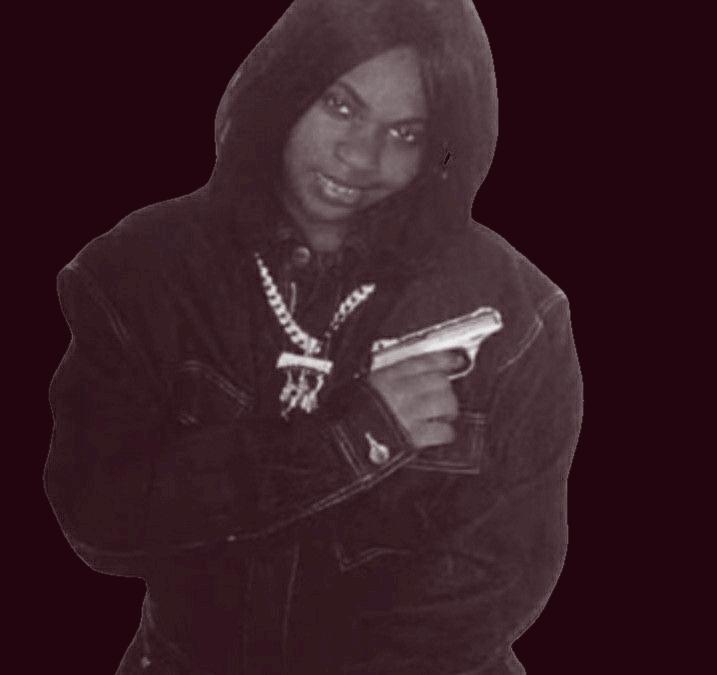

On August 22, we held the fourth installment of our Lo-Fi in HiFi series at the Memphis Listening Lab featuring a listening of La Chat’s solo debut Murder She Spoke. Prior to the listening party, we sat down with the Three 6 Mafia member for a wideranging discussion, including her serendipitous introduction into rapping, her special relationship with Gangsta Boo, and the experience of going solo. Here’s a transcript of that conversation edited for length and clarity.
Let’s start at the beginning. Tell us a bit about how you first got into rapping and who your earliest influences, were:
My biggest influence was MC Lyte. She was my favorite, because she was hardcore, but she didn’t have to show no ass and titties. She was just raw.
I started off rapping when I was in the third grade. We had a project for Black History Month and I didn’t know what to do. My brother said I should rap. I told him ‘I don’t know how to rap!’ He said ‘well you ’ re gonna learn.’ So he wrote me out a rap about Dr. Martin Luther King. So I went to school and I was nervous. Everyone had big poster boards and all of that (laughs).Anyway, I went up to the front of the class and said ‘I got a rap, ’ and they were just like ‘Ummm, ok.’ *Starts rapping* Dr. Martin Luther King, this very day/All the people just love him for what he say/ And whatever he says, he says it out loud/His voice you know just draws a crowd/See it all started out not long ago/But you was just a kid, you didn’t know/He had a dream, and his dream came true/He was fighting for the rights for me and you/He got bottles and bricks thrown in his face/But Dr. Martin Luther King never ran away/ He’s the greatest of the greatest, he’s the king of all/Dr. Martin Luther King standing brave and tall. And then, I got a standing ovation. From that day on, I thought I was a rapper.

I didn’t think we’d get into Civil Rights tonight, but I’m glad we did (Laughs). So of course everyone knows about your long-time affiliation with Hypnotize Minds and Three 6 Mafia. How did you originally link up with them?

Well I used to travel all around Memphis doing talent shows and performing at skating rinks. I was an underground rapper, then one day I came across this cat named Lil Noid, who knew Juicy J. We were going to East High summer school together and I was like ‘I can rap, ’ and he said ‘I can rap too.’ So we ended up doing a talent show. Of course he came in first place because he was already known, but I came in second.
After that, he was like ‘You CAN rap. I’m gonna give your number to Juicy J. I remember thinking ‘He ain’t gonna give my number to Juicy,’ but around midnight I got a call from him like ‘Yoo what’s up what’s up what’s up? I heard you can rap, I heard you can rap. This is Juicy, let me hear something.’ I was like ‘Uhhh, my momma ’ s at home’ (Laughs). He was like ‘Aww mane, I thought you could rap, I thought you wanted to rap, ’ and then he hung up. I really thought I had missed my chance.
A little while later, he called back and was like “Hey, how are you doing? This is Jordan.” So he’s a whole different person now (Laughs). He asked to hear a song, so I went all the way down the driveway, up the street, and around the corner. And I rapped my ass off. It was history from there.
The next day, he pulled up to the house with a little recorder, and then put me on his first mixtape. That was probably 1994.
How old were you then?
I was in my teens. I’ve been rapping all my life, so I can’t remember exactly how old, but in my teens for sure. After that, I started rapping with Tommy Wright III (points at Tommy in the crowd), and I’ve been La Chat ever since.
So of course women have been an integral part of hip-hop since day one, but you and Gangsta Boo brought a new energy to the rap game that matched the aggressiveness of the boys. Just tell us a bit of what it was like carving out a role in this extremely male-dominated space:
Whatcha talking about mane? We from Memphis! It wasn’t no other way for us to come. I always tell people, ‘people from Memphis rap just like we talk.’ Also, you know how us women are, we don’t play. That’s really all I gotta say. Blame it on the Memphis streets.
Speaking of Gangsta Boo, I know ya’ll had a very special relationship prior to her passing. Would you mind sharing a bit about it?
Gangsta Boo was my sister, and she still is my sister. It’s a sensitive situation, so I’m not going to talk for too long because I’m still healing. She’s been gone a year, eight months, and 22 days–you can see that I’m still keeping count of it–but I’m still in the healing process because she’s still supposed to be here.
As much shit as she talked, Boo would never hurt anybody or take anything from anybody. I hate the fact that she was never able to have kids or be married. The only thing she really cared about was rapping. You know, the older we all get, the more we get to experience life. I’m 46 now, but all I did in my earlier life was rap. Now, I get to take trips and vacations that aren’t all about touring or performing. I just really hate that she didn’t get to experience that part of life.
Let’s talk about the album of the hour. Of course you had been a regular on other artists' songs and albums for years, but this was your chance to debut as a solo artist. I’m curious about the process of creating and your goals for Murder She Spoke:
Well Paul and Juicy chose all the beats. I had to be in the studio from Monday to Monday until at least 7PM. My voice used to be gone and I thought that would get me out of the studio, but they’d say ‘ we can fix it!’ The craziest part is, they could fix it. They are really amazing when it comes to recording.
With Murder She Spoke, we’d just go into the studio, they’d put on a beat and be like ‘Chat, write to this,’ and then go hangout downstairs. I’d be up there with my Budweisers–shout out to Budweiser, I can’t drink them no more, but you know–I’d get on the Budweisers and just write. They’d eventually come back upstairs and want to hear it. It was like America’s Got Talent or some shit, because you ’ re hoping that they like it.
I was nervous the first few times, but at one point they were just quiet and said ‘Chat, you ’ re bumping your ass off!’ As they kept coming with the beats, I just kept coming with different styles and different flows. I was just going.
To see our full conversation, including a Q&A with the crowd, check out our video on YouTube here. Information regarding the second season of “Lo-Fi in Hi-Fi” will be coming soon...




The family of late Chicago rare soul record collector Bob Abrahamian donated his massive, one-of-a-kind collection of 45s, LPs, photographs, and oral histories to the Stax Museum of American Soul Music in early 2021. By the end of 2023, we had finished cataloging and processing all the LPs (over 1,000), band photographs (also over 1,000) and had just made a dent in the over 32,000 singles in the collection. It’s been a labor of love.
Abrahamian collected a bit of everything in the soul genre – boogie, crossover, modern, doo-wop, Motown, a bit both Northern and Southern – but he mostly focused on sweet, group-soul records that dominated the scene in predominantly Black neighborhoods on Chicago’s South and West sides.
As a student at the University of Chicago and a major hip-hop head in the late 1990s, Abrahamian originally set out to find deep soul and funk singles used to make classic hip-hop records. What he found instead, though, was that Chicago was not exactly a hotbed for these records, but rather for a sweet, tightly harmonious yet slightly raw sound influenced in equal parts by both Motown and the electric blues. That sweet soul sound exploded in the city following the Great Migration of Black Americans to Chicago from the American South in the 1940s and early 1950s.
When Abrahamian first collected these records, they were rarely sought after nor especially valuable in the rare soul world. In many ways, Bob’s status in the collecting community brought attention and interest to the sweet soul genre. Like anything, trends change, and soon those oncediscarded sweet soul 45s became quite valuable and sought after by collectors around the world.

An obsessive researcher, he found the artists, the producers, and others in his hometown of Chicago who made the music he loved. His weekly “Sitting in The Park” radio show on WHPK-FM became a showcase for both the music and the stories behind it. Abrahamian conducted over 100 interviews on his show, and became friends with the artists, not to exploit them or to get their old records on the cheap, but quite the opposite, helping them find back royalties, connecting them with concert promoters to book concerts, and sharing parts of the collection with those who had not had a copy of their own records since the ‘60s.
Each of the 192 boxes of 45s in the Abrahamian Collection is truly a collection unto itself, filled with classics and rarities, sweet soul to boogie, from New York to California, with stopovers in Akron, Des Moines, San Antonio, and Seattle. While we wish we could share all the collection with you now, we are working diligently to build a new website that will house audio recordings and transcriptions of Abrahamian’s artist interviews recordings of “Sitting in the Park,” photo galleries featuring his vast collection of artist promotional photographs, and, of course, records galore. It is a work in progress that we’ll add to throughout 2025 (and beyond), which will launch in the coming months. Stay tuned to the Stax Museum’s socials and website for updates.
In the meantime, we recently completed cataloging and accessioning box 44 of the Abrahamian Collection – here are some of our favorites:
“A
Love That’s Real” / “No One Else But You”
San Antonio, TX – Jox – 1968 – 2022.008.07244

Joe Jama and Fred Lozano released two singles as the Eptones on Jox, part of San Antonio real estate mogul Abe Epstein’s cache of more than a dozen labels. Ever in search of a hit, Epstein released garage, psych, country, and some of the best Chicano/Brown-Eyed soul singles ever recorded. Jama also released two highly sought after solo singles on the Optimum label.
“Everyday’s A Holiday”/ “Why I Love Him”
Detroit, MI – Tri-Phi – 1963 – 2022.008.07265
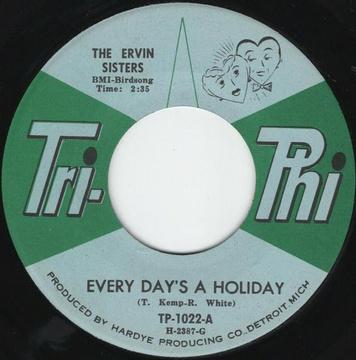
“I Can’t Get Along
Hailing from Covington, TN, Betty and Phyllis Ervins headed north to the Detroit area as part of the Great Migration and recorded three singles between 1963 and 1967, including two for Harvey Fuqua’s Tri-Phi label, an early Motown subsidiary. This record is a strong reminder of how much great soul and R&B music was being made in Detroit outside of Hitsville USA.
The Esquires
Without
You Baby”/ “Just Loafin’” Detroit, MI – Tri-Phi – 1963 – 2022.008.07265

A bit of blue-eyed soul from West Virginia, the Esquires are one of dozens of groups to use it as a band name in the 1960s and 70s. This lo-fi record has one hell of a backbeat and is one of two on the Albun label and is one of a few rare soul singles to come from the Mountain State. Native West Virginian Turley Richards, who released several major label singles and albums in the late 1960s, wrote the A-side.
“I Won’t Let Her See Me Cry” / “The Secret”
Detroit, MI – Tri-Phi – 1963 – 2022.008.07265

Claflin College student Frank Dell, aka Big Frank Murphy, and his brother, Warren, formed a singing group and headed to New York to compete at the Apollo Theater. They won three weeks in a row and, as a result, recorded this Northern Soul floor filler for Blue Rock/Philips. Dell had a long career as a solo artist and released several excellent sides on Valise Records.
“It Was Love”/ “Big Ole Good Thing”
Kingsport, TN – Trail – 1969 – 2022.008.7349
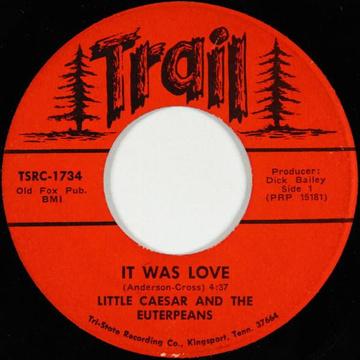
Euterpe was the muse of lyric poetry and music in Greek mythology, so these folks – nay, Euterpeans – out of NE Tennessee were certainly some wellread young men. The group recorded now sought after singles before 1970. This one follows the standard soul single format: a yearning, powerful ballad on the A-side with a stone dancer on the flip. If “Big Ole Good Thing” doesn’t get you up and going, nothing will!
To learn more about the Stax Museum of American Soul Music and their ongoing work with the Bob Abrahamian collection, visit https://staxmuseum.com/museum/.



Nat D. Williams, Dewey Phillips, Rufus Thomas, George Klein...Plenty of ink has been spilled about these titans of Memphis radio who helped to shape the format during its golden era, but for a more personal list of the city’s greatest radio personalities, we turned to two men who are helping to keep radio in the Bluff City as relevant as ever: WYXR Executive Director Robby Grant and Program Manager Jared “Jay B.” Boyd.


Mike Honeycutt was the heartbeat of late-night Memphis on WEVL for years. He played the kind of weird, mindbending music that made a young version of me sit bolt-upright in the dark and really listen. What made him even cooler was how approachable he was. Unlike the distant, untouchable voices of commercial radio, Mike was real—picking up the phone at 1 a.m., ready to chat with anyone curious enough to ask about the song they'd just heard. He made it all feel personal as if the music was a secret you were both in on. - R.G.

When I was in elementary school, Devin Steel was something of a myth. We would huddle around our little boomboxes and pass around Walkman players to tune into local hip-hop broadcasts. These times were preinternet, so we couldn't just jump on Instagram to learn more about Memphis media people. So, those of us with parents and older siblings who were old enough to go clubbing had delivered the message that our favorite rap DJ was a white guy, which was the subject of much discussion on the blacktop. Fresh out of college, I was interning at the Commercial Appeal and got to work with him backstage at an event. Since then, I've received invaluable mentorship, encouragement, and advice from him.J.B.



Bad Dog McCormack was one of those classic "morning zoo" characters, but he was so much more than a cliché—he was funny. Mornings on Rock 103, he was there, a part of my daily routine. What really sticks with me personally is that he hosted the White Station talent show—my band was playing, and I remember thinking, this is it. - RG

Jim Spake was the first DJ who truly opened my ears. I remember exactly where I was when I heard The Modern Lovers for the first time on his show—I literally had to pull the car over just to take it all in. And that was just the beginning. Jim had this incredible ability to surprise you, to drop something unexpected that would shift your whole perspective on music. He's still doing it weekly on WYXR, and I keep tuning in because he never disappoints. His influence on my musical taste runs deep. - RG


My ride to school each morning as a child consisted of many voices. If my mother was driving, it was, for sure, going to be the legendary syndicated Tom Joyner Morning Show. If my father was behind the wheel, TJMS was a safe bet, too. But he'd often enough allow me to roll the dial to 107.1 FM for the Hot Wake-Up Show, which had a revolving door of male co-hosts (even, at one time, employing ex-Geto Boy Bushwick Bill) to play off of Terris "TK" King, the leading lady of many of my morning treks to Richland Elementary and later White Station Middle and High School. Years later, TK is teaching radio at The University of Memphis, and I've been fortunate to spend time with her students on campus and at our WYXR studio. Hopefully, we'll both be able to look back and see a positive impact on the future icons of Memphis radio. -JB
For everything WYXR, including information about Robby and Jay B.’s own excellent shows, visit WYXR.org

A quick guide to some historical landmarks, venues, restaurants, and shops that make up our little corner of the world
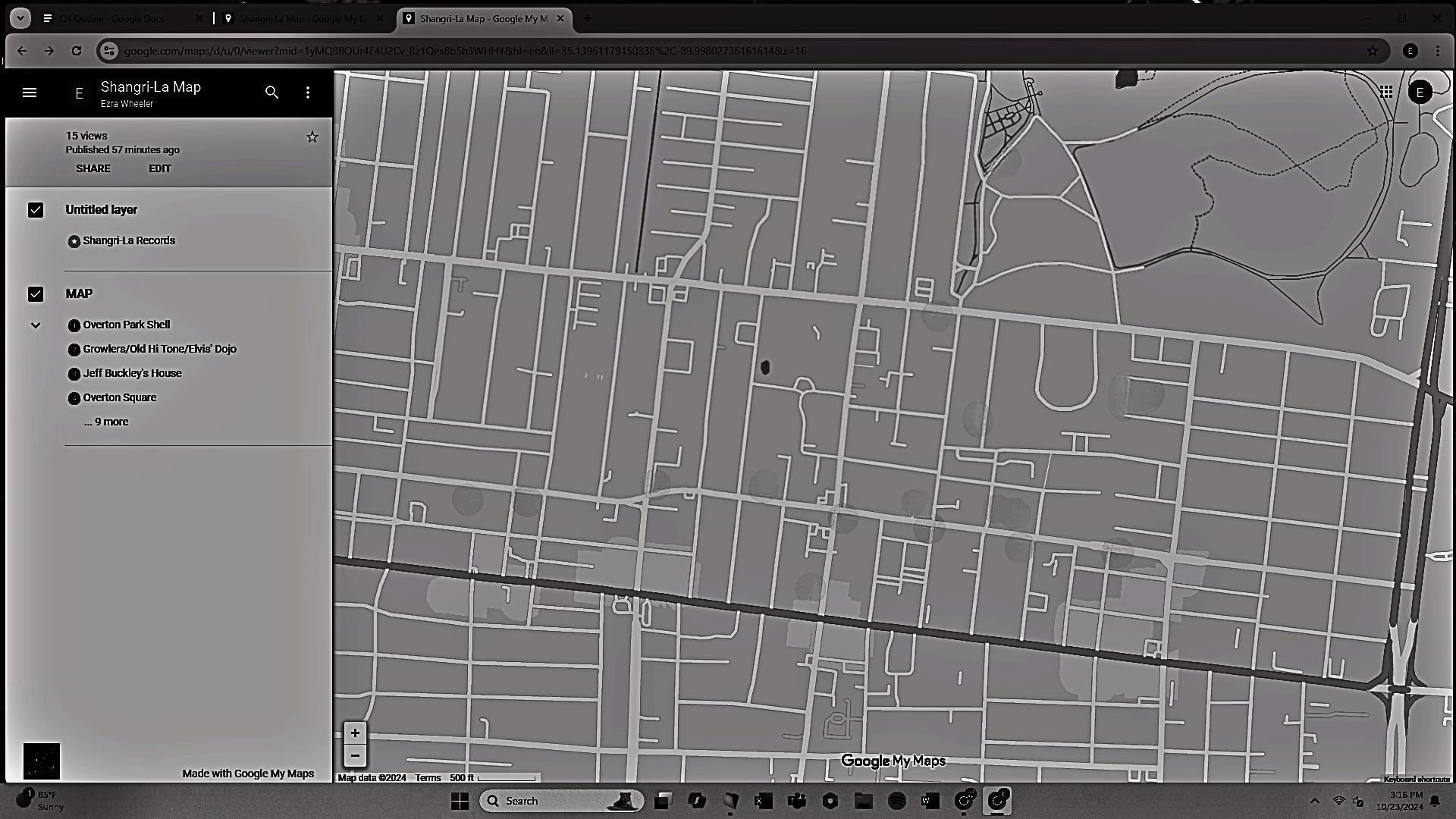




Built in 1936 as a project of the Works Progress Administration, the Overton Park Shell remains a critical piece of the local music ecosystem, regularly hosting free live music events for the public. The venue is also of great historical significance. As you may have heard, Elvis Presley held his first public performance at the Shell on July 30, 1954 as the opening act for Slim Whitman, a concert now considered to be the first in the history of rock n’ roll. In the ensuing decades, the Shell has hosted countless other notable performances and festivals, including the storied Memphis Country Blues Festival, which featured local luminaries such as Furry Lewis, Bukka White, Rufus Thomas, Albert King, and Booker T. & the MGs. It continues today with modern blues purveyors such as the North Mississippi Allstars, Alvin Youngblood Hart, Cedric Burnside, and many more.




Before the squat-yet-spacious brick building at 1911 Poplar became the home to the live music venue Growlers in 2016, it had quite the colorful history. For 15 years, it was the original home of the Hi-Tone, one of the city’s most beloved venues, which has since relocated to the Crosstown neighborhood. Years before that, it was the home to the Kang Rhee Institute, a karate studio famous for training Elvis Presley between 1970-1974.
Since opening as Growlers, the venue--which has a capacity of 300-- has regularly featured a diverse line-up of local and national acts alike several nights a week. In a city with a dearth of quality mid-size venues, Growlers has stepped up to the plate in a big way, giving yet another lease on life to a pretty incredible building.




Prior to his untimely death in 1997 at the age of 30, the angelic-voiced singer Jeff Buckley spent the better part of a year living in Memphis in this humble little home nestled in Midtown. A frequent visitor to neighborhood landmarks such as the Memphis Zoo and us here at Shangri-La, Buckley left a lasting impression on many of his neighbors and newfound friends who remember the mysterious star as generous, shy, witty and unbelievably talented.
Last year, it was announced that the home was being renovated and turned into an Airbnb by developers, who hope that it can become a destination for fans of the late singer.




Overton Square, the thriving entertainment district boasting a wide selection of restaurants, bars, theaters, and retail, has seen plenty of upsand-downs since its 1970s heyday. Back then, the intersection of Madison and Cooper was not the family-friendly locale that it is today, but rather the epicenter of the city’s counterculture, attracting everyone from rowdy rock ‘n’ rollers to art students to intellectual hipsters. Centered around the first T.G.I. Friday’s to exist outside of NYC, Overton Square was also the first place in Memphis to serve liquor by the drink. Those who were around to witness it still weave tales about seeing Billy Joel and Big Star play into the early hours at Lafayette’s Music Room, or the time that Muhammad Ali served as the grand marshal for the annual Christmas parade. Like Beale Street, Overton Square now serves as both a vibrant symbol of the city’s present and a gateway into its past.


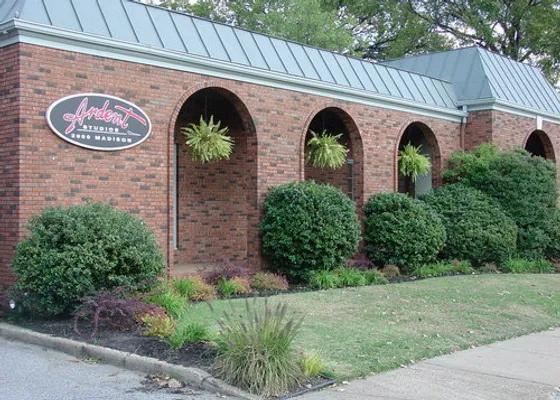

It’s no exaggeration to say that Ardent Studios, founded in 1959 by producer John Fry, is one of the most renowned recording studios in the world. Initially established as a small, independent facility, Ardent quickly gained recognition for its innovative approach to music production and its role in shaping the sound of Southern rock and soul.
From hometown heroes such as Big Star and Isaac Hayes to internationally renown icons such as Led Zeppelin and Z.Z. Top, the studio's commitment to quality has seen an unbelievable number of icons and legends walk through its doors over the past several decades, including R.E.M. and The White Stripes, among many others.




At this point, we’re willing to bet that virtually every staff member here at Shangri-La could recite the Kwik Chek menu from memory. The Midtown institution, which lies comfortably in the center of the Venn diagram between a convenience store and a deli, specializes in an eclectic mix of Korean, Mediterranean, and classic sandwhiches and wraps. Although you could throw a dart at their chalkboard menu and not be disappointed at the outcome, some of our favorites include the kimchi burrito, the bibimbap burger, the Ninja, and the vegetarian Bloody Valentine. No-frills, affordable, and delicious: A perfect combination.


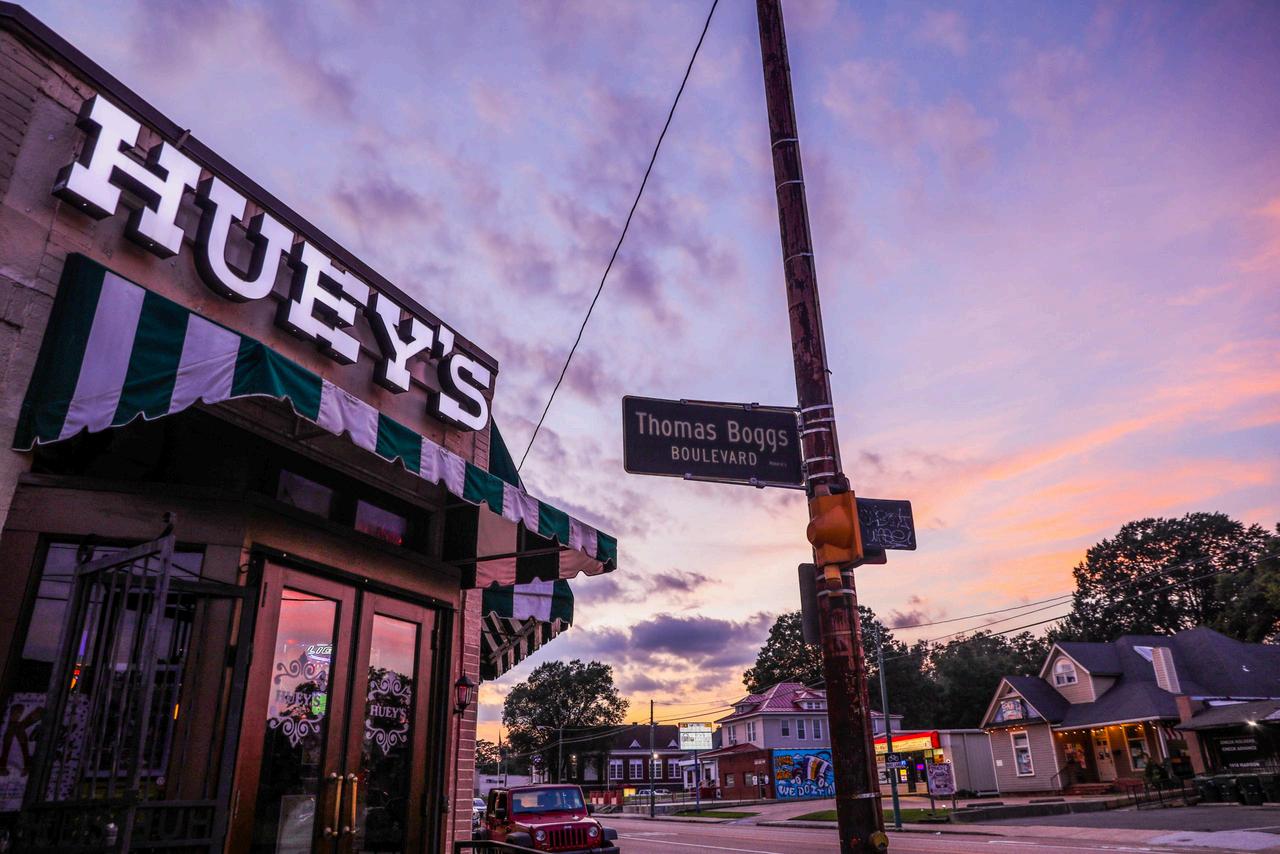

The perennial winner of several “best burger in Memphis” competitions for the past 30+ years, Huey’s is a beloved local chain that features a wide selection of casual American favorites, a full bar, and the type of cozy atmosphere that only comes with decades of history. The original location has been our neighbor for decades, and we’re certainly not complaining. Huey’s was founded in 1970 and soon came under the tutelage of the late Thomas Boggs, whose name may be familiar to Memphis music fans as a member of Tommy Burk and the Counts, Flash and The Board of Directors, and most notably, the Box Tops. The restaurant is still owned and operated by the Boggs family, who have been wise enough to adhere to the old adage “if it ain’t broke, why fix it?” Be on the lookout for info on their 55th anniversary block party celebration this April.




Originally opened in 1990 as an Italian grocery, Fino’s has since morphed into one of the city’s finest delis and a true Midtown institution. Although best known for their selection of hot and cold sandwiches, the deli also offers a variety of excellent salads, pastas, and pizzas as well. In 2019, the restaurant was sold to chef Kelly English, who introduced several new menu concepts, while still keeping the recipes and items that originally made Fino’s a local favorite. As frequent lunch-time customers, we’d suggest trying the Penn Station, Cajun Turkey, and Chicken Cacciatore, or grab some gelato from local purveyors Zio Matto to go.




When Johnny Cash moved to Memphis in 1954, his first home was at this brick apartment complex near the corner of Madison and McClean, which is still in-use today. At the time, Cash was selling vacuum cleaners door-todoor and attending a radio announcer’s school while also raising his young family.
That September, Cash’s life would change forever when he was awarded a contract with Sun Records for his classic debut release “Hey Porter.” The rest, as they say, is history.



Originally the home of Brady & Lil’s Bar-B-Q, the Bar-B-Q Shop has been a neighborhood staple since 1987. The restaurant, which was recently recognized as having the best ribs in America by the Food Network, is renowned for their real-pit barbecue and signature Dancing Pigs Bar-B-Q Sauce. While the debate around Memphis barbecue supremacy will likely continue in perpetuity, the Bar-B-Q Shop deserves to be part of the conversation.




“The Lamp,” as it’s affectionately known by locals, is one of Memphis’ last classic dive bars, filled to the brim with mismatched furniture and faded beer signs, all of which is coated in a nicotine patina . For decades, the shabby little watering hole has attracted customers from every walk of life in need of a cheap, cold beer.
In recent years, the Lamp has significantly increased their square footage, providing space for live performances of every conceivable type, including drag shows, comedy, and of course, live music. In 2006, Cat Power shot the music video for her song “Lived in Bars” at the Lamplighter, featuring guest appearances from local legends Teenie Hodges and Ruby Wilson.




They just don’t make ‘em like Murphy’s anymore. The Irish dive, which first opened in 1977, is a portal into a bygone era of Memphis, Midtown, and Madison Ave. Although its primary function over the past several decades has been as a reliable neighborhood hang, Murphy’s has frequently hosted concerts over the years, including as a site for several early iterations of Gonerfest.
Not much has changed at Murphy’s over the past several decades, which we consider a good thing. So if you’re looking for a no-frills joint offering cold beers, good burgers, and a game of pool, you’d be hard pressed to do better.




This massive building on Madison Ave. was built nearly a century ago as the Tasty Bread factory, before eventually becoming the home to Strings & Things, a long-running local musical instrument store that was known for producing some of the best guitars of the 1980s.
In February of 2009, the building officially became Minglewood Hall and opened with a concert from folk-rockers Old Crow Medicine Show. In addition to the primary 1,500 person capacity room, the building also houses the smaller 1884 Lounge (with a capacity of 400) and B-Side, an intimate venue that hosts local acts every night of the week. Be sure to follow us on social media as we regularly give away tickets to events there.




Despite the fact that it shuttered its doors back in 1995, we couldn’t leave the Antenna Club off of our community map. Remembered fondly as Memphis's original punk rock club, the Antenna has entered the realm of mythos, becoming the subject of think-pieces, songs, and a documentary.
During the club’s heyday, the Antenna welcomed some of the world’s biggest and most influential punk and indie acts, including R.E.M., the Replacements, Black Flag, Alex Chilton, and countless others. In 2019, the club’s former site was given a historical marker detailing its importance, a surprising yet fitting tribute to the Memphis music landmark. Fittingly, if unfortunately, that historical marker has since been relocated to an unknown private residence by an unauthorized individual.





1“MaryBoone”-VampireWeekend . “FuneralforJustice”-Mdou Moctar
3.“Euphoria”-KendrickLamar
4.“Teleharmonic”-TheSmile
5.“DeathandRomance”MagdalenaBay
3.“MNIEGG-mix”-idontknowjeffery, Marcus.901,DukeDeuce
4.“SureThang”-TalibahSafiya 5.“HeartbrokeTown”-TheHypos

A heartfelt thanks to all of the contributors, artists, sponsors, and everyone else who helped to make this magazine possible. Please help to share the word, and we’ll see you in the spring!
